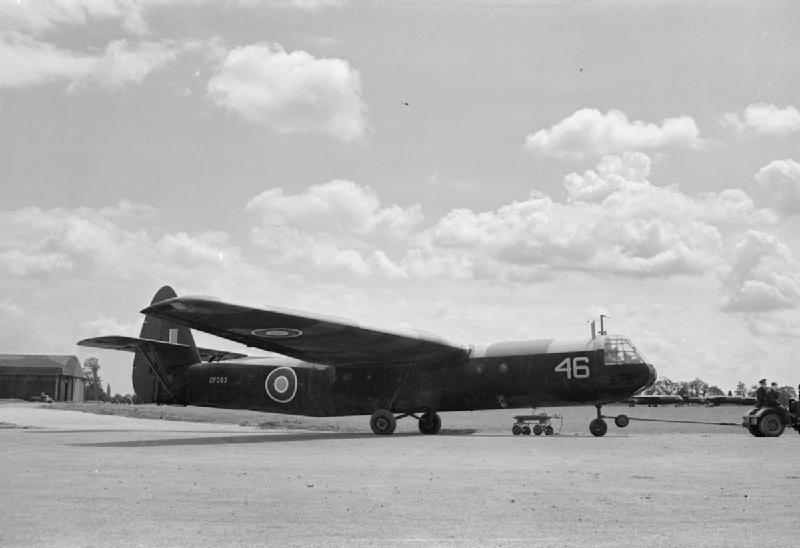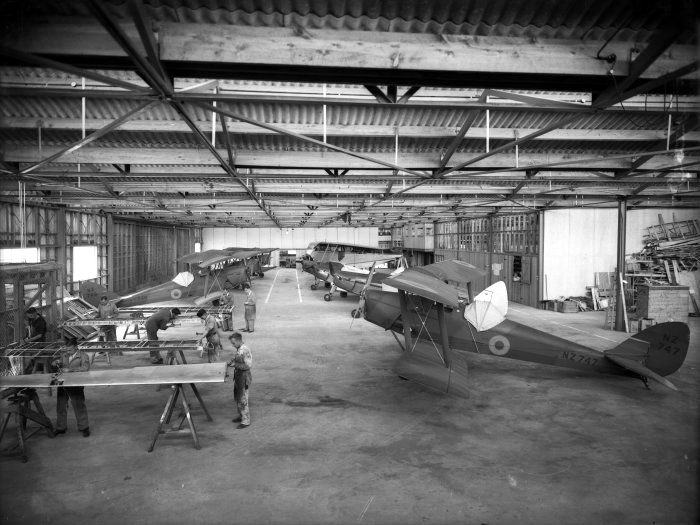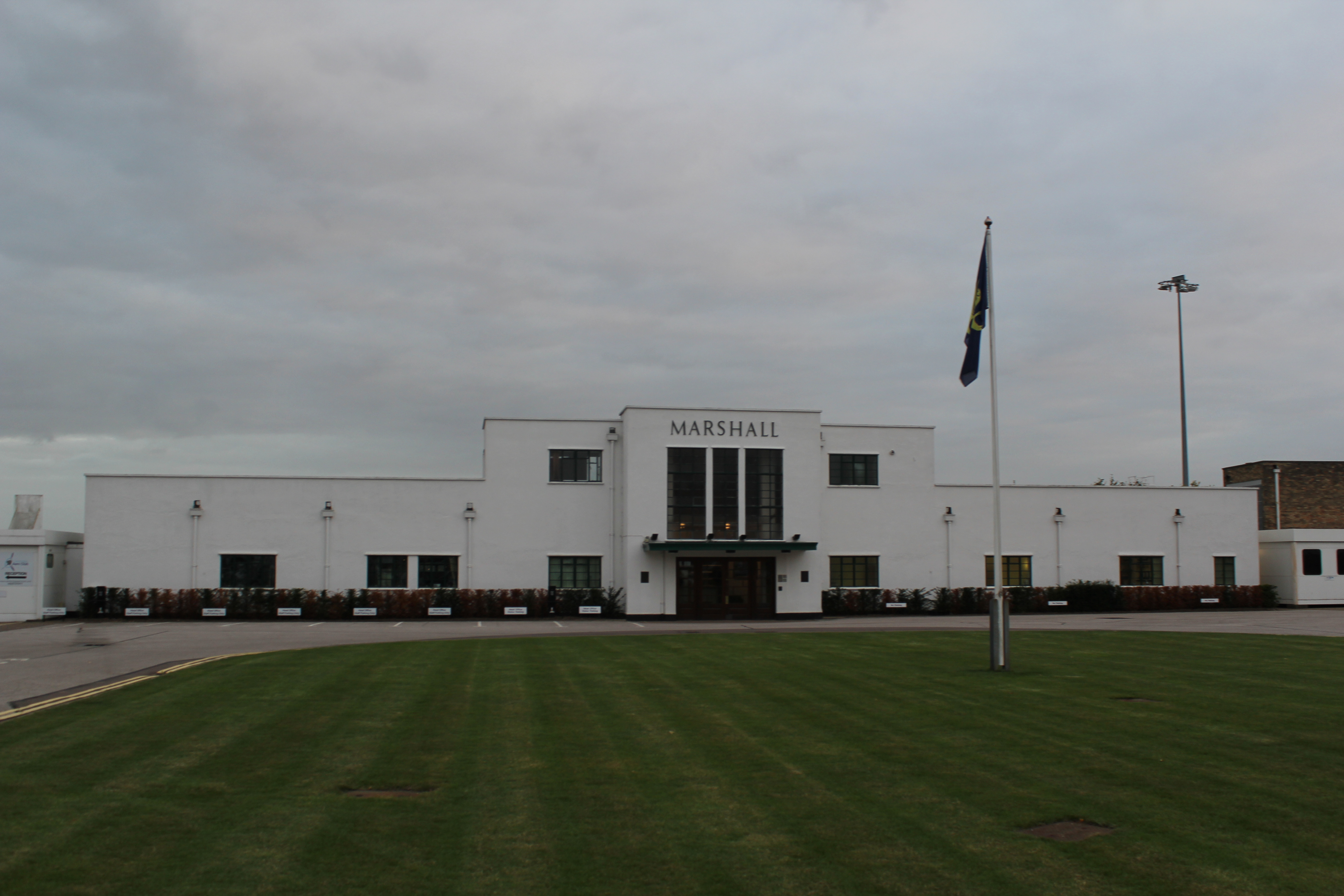|
Eric Barwell
Eric Barwell, (6 August 1913 – 12 December 2007) was a British flying ace who served in the Royal Air Force (RAF) during the Second World War. He was credited with having shot down at least nine aircraft, plus one V-1 flying bomb. Born in Clare, Suffolk, Barwell, a serving member of the Royal Air Force Volunteer Reserve, was called up for service in the RAF on the outbreak of the Second World War. Posted to No. 264 Squadron, he flew Boulton Paul Defiant fighters during the later stages of the Battle of France when the British Expeditionary Force was evacuated from Dunkirk. Achieving a number of aerial victories, he flew in the following Battle of Britain. By the end of 1940, the squadron was on night fighter operations. Awarded the Distinguished Flying Cross (DFC) in February 1941, he was posted to a few months later to No. 125 Squadron, which he subsequently commanded. Later in the war he achieved further aerial victories flying the De Havilland Mosquito heavy fighter and ... [...More Info...] [...Related Items...] OR: [Wikipedia] [Google] [Baidu] |
Night Fighter
A night fighter (also known as all-weather fighter or all-weather interceptor for a period of time after the Second World War) is a fighter aircraft adapted for use at night or in other times of bad visibility. Night fighters began to be used in World War I and included types that were specifically modified to operate at night. During the Second World War, night fighters were either purpose-built night fighter designs, or more commonly, heavy fighters or light bombers adapted for the mission, often employing radar or other systems for providing some sort of detection capability in low visibility. Many night fighters of the conflict also included instrument landing systems for landing at night, as turning on the runway lights made runways into an easy target for opposing intruders. Some experiments tested the use of day fighters on night missions, but these tended to work only under very favourable circumstances and were not widely successful. Avionics systems were greatly ... [...More Info...] [...Related Items...] OR: [Wikipedia] [Google] [Baidu] |
Commission (document)
A commission is a formal document issued to appoint a named person to high office or as a commissioned officer in a territory's armed forces. A commission constitutes documentary authority that the person named is vested with the powers of that office and is empowered to execute official acts. A commission often takes the form of letters patent. Commissions are typically issued in the name of or signed by the head of state. In Commonwealth realms, the documentation is referred to a King's Commission or Queen's Commission (depending on the gender of the reigning monarch). However, in Commonwealth realms other than the United Kingdom, they may be signed by the governor-general, the representative of the monarch of that realm. Terminology Because the word "commission" can also refer generally to an individual's duty, the more specific terms commissioning parchment or commissioning scroll are often used to specify the commissioning document. However the document is not usually i ... [...More Info...] [...Related Items...] OR: [Wikipedia] [Google] [Baidu] |
RAF Brize Norton
Royal Air Force Brize Norton or RAF Brize Norton in Oxfordshire, about west north-west of London, is the largest station of the Royal Air Force. It is close to the village of Brize Norton, and the towns of Carterton and Witney. The station is the base for air transport, air-to-air refuelling and military parachuting, with aircraft operating from the station including the Lockheed C-130 Hercules, Boeing C-17 Globemaster III, Airbus A400M Atlas and Airbus Voyager which replaced the now-decommissioned Vickers VC10 in September 2013 and the Lockheed TriStar in March 2014. Major infrastructure redevelopment began in 2010, ahead of the closure of RAF Lyneham in 2012, and Brize Norton became the sole air point of embarkation for British troops. History Royal Air Force Construction of RAF Brize Norton began in 1935 with the official opening taking place on 13 August 1937. The station was originally to be named RAF Carterton, given its proximity and relationship with the tow ... [...More Info...] [...Related Items...] OR: [Wikipedia] [Google] [Baidu] |
Aircrew Brevet
Aircrew, also called flight crew, are personnel who operate an aircraft while in flight. The composition of a flight's crew depends on the type of aircraft, plus the flight's duration and purpose. Commercial aviation Flight deck positions In commercial aviation, the aircrew are called ''flight crew''. Some flight crew position names are derived from nautical terms and indicate a rank or command structure similar to that on ocean-going vessels, allowing for quick executive decision making during normal operations or emergency situations. Historical flightdeck positions include: * Captain, the pilot highest-ranking member or members of a flight crew. * First officer (FO, also called a co-pilot), another pilot who is normally seated to the right of the captain. (On helicopters, an FO is normally seated to the left of the captain, who occupies the right-hand seat).Smith, PatrickPatrick Smith's Ask The Pilot: When a Pilot Dies in Flight AskThePilot.com website, 2013, whi ... [...More Info...] [...Related Items...] OR: [Wikipedia] [Google] [Baidu] |
Trainer Aircraft
A trainer is a class of aircraft designed specifically to facilitate flight training of pilots and aircrews. The use of a dedicated trainer aircraft with additional safety features—such as tandem flight controls, forgiving flight characteristics and a simplified cockpit arrangement—allows pilots-in-training to safely advance their skills in a more forgiving aircraft. Civilian pilots are normally trained in a light aircraft, with two or more seats to allow for a student and instructor. Tandem and side by side The two seating configurations for trainer aircraft are: pilot and instructor side by side, or in tandem, usually with the pilot in front and the instructor behind. The side-by-side seating configuration has the advantage that pilot and instructor can see each other's actions, allowing the pilot to learn from the instructor and the instructor to correct the student pilot. The tandem configuration has the advantage of being closer to the normal working environment that ... [...More Info...] [...Related Items...] OR: [Wikipedia] [Google] [Baidu] |
Tiger Moth
The de Havilland DH.82 Tiger Moth is a 1930s British biplane designed by Geoffrey de Havilland and built by the de Havilland Aircraft Company. It was operated by the Royal Air Force (RAF) and other operators as a primary trainer aircraft. In addition to the type's principal use for ''ab initio'' training, the Second World War had RAF Tiger Moths operating in other capacities, including maritime surveillance and defensive anti-invasion preparations; some aircraft were even outfitted to function as armed light bombers. The Tiger Moth remained in service with the RAF until it was replaced by the de Havilland Chipmunk during the early 1950s. Many of the military surplus aircraft subsequently entered into civilian operation. Many nations have used the Tiger Moth in both military and civilian applications, and it remains in widespread use as a recreational aircraft. It is still occasionally used as a primary training aircraft, particularly for those pilots wanting to gain experi ... [...More Info...] [...Related Items...] OR: [Wikipedia] [Google] [Baidu] |
Cambridge City Airport
Cambridge City Airport , previously Marshall Airport Cambridge UK, is a regional airport in Cambridgeshire, England. It is located on the eastern outskirts of Cambridge, south of Newmarket Road and west of the village of Teversham, from the centre of Cambridge and approximately from London. Marshall of Cambridge Aerospace Limited has a CAA Public Use Aerodrome Licence (Number P433) that allows flights for the public transport of passengers or for flying instruction. The airport is available for corporate and private use, and is home to four flying schools. Since 2016 there have been no public scheduled flights from the airport. History Early years Opened in 1938, when it replaced the old airfield at Fen Ditton, the airport is owned and operated by Marshall Aerospace, a Cambridge-based company with many years' history servicing civilian and military contracts. The main building, which is a Grade II listed building, was designed by the architect Harold Tomlinson of ... [...More Info...] [...Related Items...] OR: [Wikipedia] [Google] [Baidu] |
List Of Reserve Flying Schools
This is a List of Reserve flying schools of the Royal Air Force The Royal Air Force (RAF) is the United Kingdom's air and space force. It was formed towards the end of the First World War on 1 April 1918, becoming the first independent air force in the world, by regrouping the Royal Flying Corps (RFC) and ... Elementary and Reserve Flying Training Schools Elementary Flying Training Schools Reserve Flying Schools References Citations Bibliography * {{RAF unit types Reserve flying schools ... [...More Info...] [...Related Items...] OR: [Wikipedia] [Google] [Baidu] |
Cambridge
Cambridge ( ) is a university city and the county town in Cambridgeshire, England. It is located on the River Cam approximately north of London. As of the 2021 United Kingdom census, the population of Cambridge was 145,700. Cambridge became an important trading centre during the Roman and Viking ages, and there is archaeological evidence of settlement in the area as early as the Bronze Age. The first town charters were granted in the 12th century, although modern city status was not officially conferred until 1951. The city is most famous as the home of the University of Cambridge, which was founded in 1209 and consistently ranks among the best universities in the world. The buildings of the university include King's College Chapel, Cavendish Laboratory, and the Cambridge University Library, one of the largest legal deposit libraries in the world. The city's skyline is dominated by several college buildings, along with the spire of the Our Lady and the English Marty ... [...More Info...] [...Related Items...] OR: [Wikipedia] [Google] [Baidu] |
Wellingborough School
Wellingborough School is a co-educational day independent school in the market town of Wellingborough in Northamptonshire. It was established in 1595 and is one of the oldest schools in the country. The school today consists of a Prep school (ages 3–10) Senior school (ages 11–16) and a sixth form (ages 16–18). History The original school was a Tudor grammar school in the centre of the town; its original building, built 1617 at a cost of 25 pounds, still survives, now occupied by a local cafe. In January 1881 the school moved under the 28th headmaster to its present site on the edge of Wellingborough. During World War I, about 1,060 alumni of the school saw action. These included the flying-ace Henry Winslow Woollett, famous for 35 victories in the air. 181 old boys and masters were killed in action, among them the former school chaplain, Bernard Vann, who was awarded the Victoria Cross posthumously. Between the wars, the school's sporting prowess continued, and i ... [...More Info...] [...Related Items...] OR: [Wikipedia] [Google] [Baidu] |
Suffolk
Suffolk () is a ceremonial county of England in East Anglia. It borders Norfolk to the north, Cambridgeshire to the west and Essex to the south; the North Sea lies to the east. The county town is Ipswich; other important towns include Lowestoft, Bury St Edmunds, Newmarket, and Felixstowe which has one of the largest container ports in Europe. The county is low-lying but can be quite hilly, especially towards the west. It is also known for its extensive farming and has largely arable land with the wetlands of the Broads in the north. The Suffolk Coast & Heaths and Dedham Vale are both nationally designated Areas of Outstanding Natural Beauty. History Administration The Anglo-Saxon settlement of Suffolk, and East Anglia generally, occurred on a large scale, possibly following a period of depopulation by the previous inhabitants, the Romanised descendants of the Iceni. By the fifth century, they had established control of the region. The Anglo-Saxon inhabitant ... [...More Info...] [...Related Items...] OR: [Wikipedia] [Google] [Baidu] |




.jpg)




